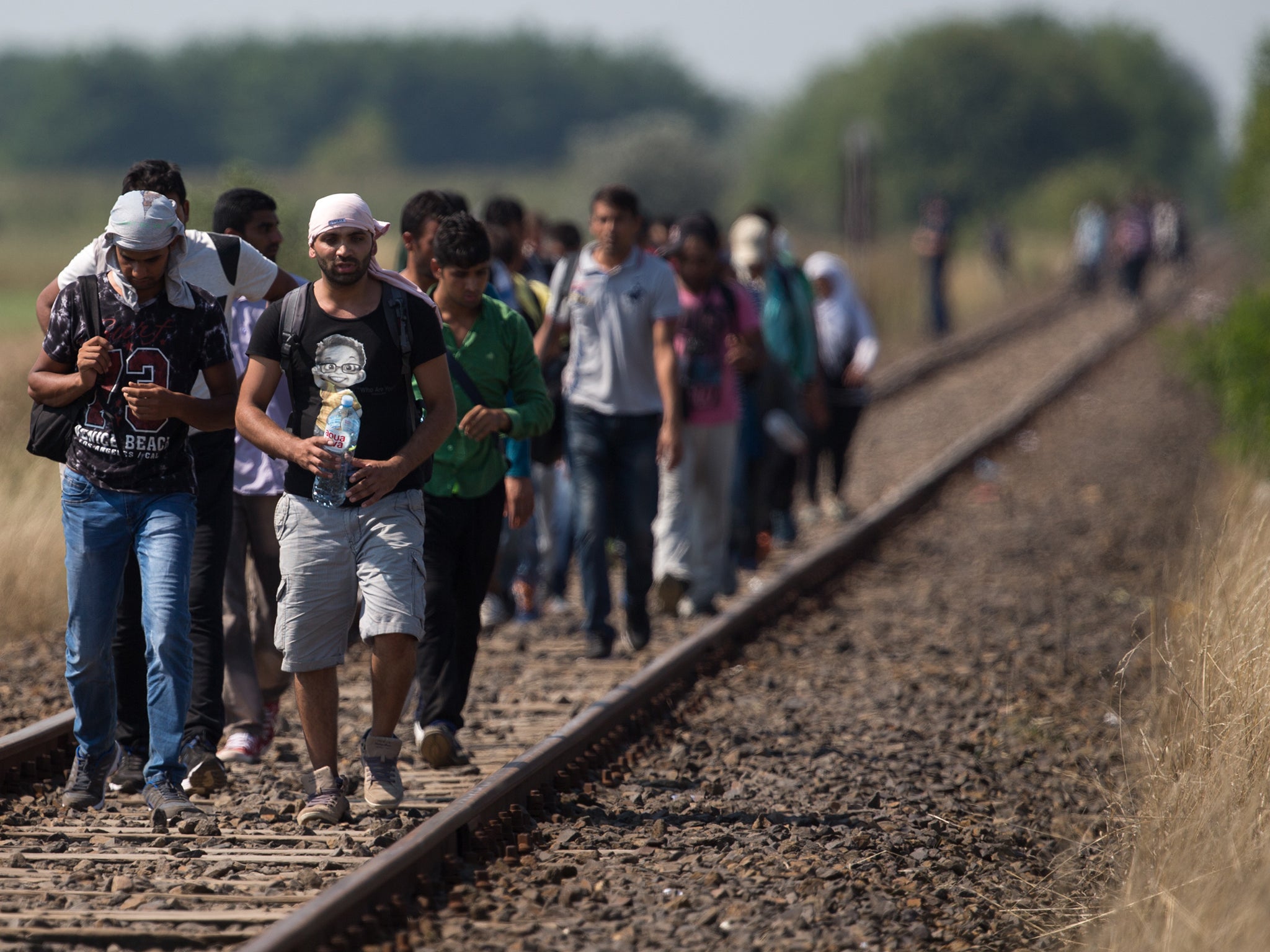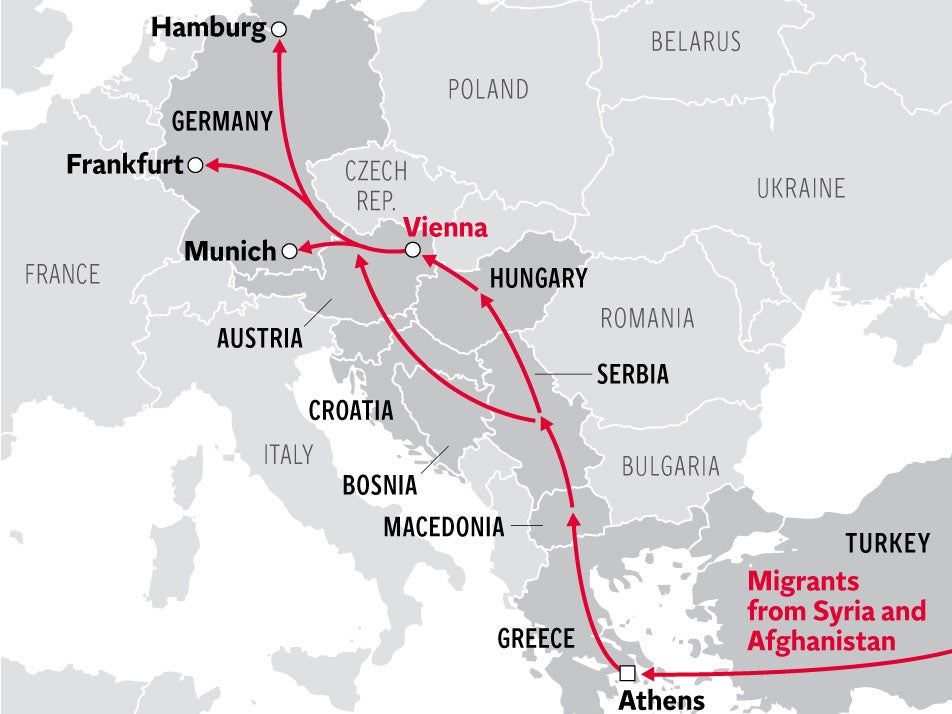6 charts and a map that show where Europe's refugees are coming from - and the perilous journeys they are taking
Record numbers of people fleeing war, persecution and poverty are entering the EU

Your support helps us to tell the story
From reproductive rights to climate change to Big Tech, The Independent is on the ground when the story is developing. Whether it's investigating the financials of Elon Musk's pro-Trump PAC or producing our latest documentary, 'The A Word', which shines a light on the American women fighting for reproductive rights, we know how important it is to parse out the facts from the messaging.
At such a critical moment in US history, we need reporters on the ground. Your donation allows us to keep sending journalists to speak to both sides of the story.
The Independent is trusted by Americans across the entire political spectrum. And unlike many other quality news outlets, we choose not to lock Americans out of our reporting and analysis with paywalls. We believe quality journalism should be available to everyone, paid for by those who can afford it.
Your support makes all the difference.More migrants and refugees are arriving in Europe than ever recorded before as war, persecution and poverty continues to drive people from their homes - and the numbers are still rising.
One in every 122 people in the world is currently either a refugee, internally displaced or seeking asylum because the "world is a mess", according to the head of the UN’s refugee agency.
It comes as The Independent publishes powerful images of a dead child washed up on a beach in a Turkish tourist spot, thought to be one of 11 Syrians who drowned trying to reach Europe.

The true number of arrivals, mainly taking perilous voyages over the Mediterranean and Aegean seas, or trekking through the Balkans, is impossible to gauge but 350,000 have been detected so far this year.
Many families arriving in the EU have stayed in several countries on their long journeys, while others have been driven out of places like Libya where they initially worked or sought refuge before it descended into turmoil.
Ranked by citizenship, most migrants and refugees are from Kosovo, a partially-recognised state where youth unemployment stands at more than 55 per cent.
Syrians, Afghans and Iraqis make up some of the other largest groups, fleeing conflict and insurgencies from Islamist groups including Isis and the Taliban.
According to Frontex, the EU border agency, trends at the start of this year showed a tenfold annual increase in people travelling from Greece on the Western Balkans route.
Dozens of men, women and children have been killed walking on railway lines on the long trek through Macedonia, Serbia, Croatia and Hungary, which is building a controversial 100-mile long fence to keep them out.
A huge proportion of people are continuing to cross the Mediterranean in voyages that have killed more than 2,000 so far this year.
Most people coming by sea are currently arriving in Greece, closely followed by Italy. Other destinations include Spain and Malta, on a far smaller scale.
In Greece, 23,000 migrants entered last week alone, mainly making the journey to islands in the Aegean including Kos and Lesbos in flimsy rubber dinghys.
EU law states that people must apply for asylum in their country of arrival and wait for their application to be granted before they can legally travel onwards through the Schengen zone.
But as countries like Italy and Greece struggle to cope with overwhelming demand on their administration, many people are carrying on to other European nations on their journey or delaying the process until they arrive in their final destination.
Statistics from the European Commission show that 185,000 people applied for asylum for the first time across the EU in the first three months of this year, but only a tiny fraction were in Britain.
Germany is received the bulk of applications at the start of this year and expects to receive more than 800,000 refugees in 2015 - mostly from Syria.
Most of those lodging applications in Britain were from Pakistan, followed by Eritrea and Syria.
For someone to be recognised as a refugee in the UK, the government must be satisfied that they are unable to go back to their own country or live safely there because of conflict or persecution.
When the figures are adjusted to be proportionate to countries’ respective populations, the UK ranks in 17th place.
There were 114 asylum seekers for every million people already living in the country in the first three months of this year.
In Hungary, which is a major entry point for refugees taking the land route through the Balkans, the figure was almost 30 times that.
According to UNHCR figures, the country with the most refugees in the world per capital (1,000 inhabitants) last year was Lebanon at 232 - more than a fifth of its population.
In second place was Jordan, followed Nauru, Chad, Djibouti, South Sudan and Turkey.
The only European countries on the list were Sweden and Malta, on 15 and 14 respectively.
Join our commenting forum
Join thought-provoking conversations, follow other Independent readers and see their replies
Comments